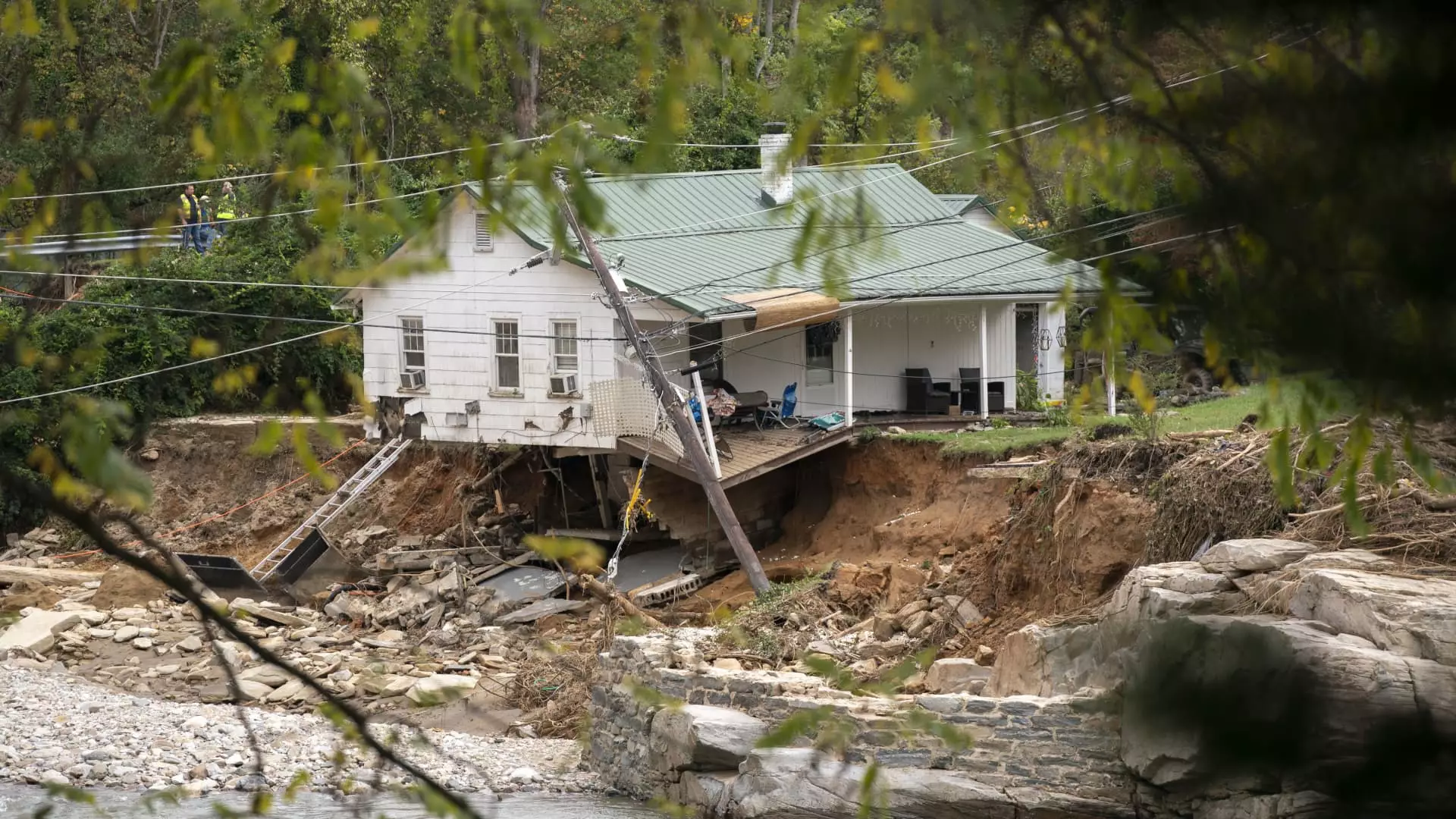In recent years, the increasing frequency and severity of natural disasters have prompted a shift in how prospective homeowners view insurance and property risk. The devastation caused by natural events such as Hurricane Helene, which incurred insured losses exceeding $6 billion, has exposed a critical gap in coverage among homeowners, particularly in regions like North Carolina. Despite the enormity of insured losses, the implications become graver when considering the high amount of uninsured losses, primarily stemming from the lack of flood insurance among homeowners in areas perceived as being outside of flood zones.
Traditionally, flood insurance is a requirement only for homes located within designated areas as specified by the Federal Emergency Management Agency (FEMA). Statistics indicate that a mere 4% of North Carolina homes fall within these flood zones. However, a notable study from First Street, a climate risk assessment firm, suggests that nearly 12% of homes in North Carolina are indeed subject to flood risk when factoring in climate change dynamics. This statistic highlights the crucial need for a more comprehensive understanding of climate-related dangers that conventional metrics fail to capture.
To bridge this significant gap, new technologies are emerging that provide comprehensive risk assessments for properties. Specifically, First Street has begun integrating climate risk data into property listings on platforms like Zillow. This means that homebuyers can now access detailed information about flood, fire, wind, air quality, and heat risks associated with properties they are considering. These risk scores, which also project potential future increases in these risks over the standard lengths of fixed-rate mortgages (15 and 30 years), represent a significant leap forward in consumer education.
The implications of these advancements are manifold. Consumers can now make better-informed decisions, assessing not only the present risks but also predicting how climate change could escalate these dangers in the future. As noted by Skylar Olsen, chief economist at Zillow, these data points have become essential tools for buyers and sellers alike, shaping discussions around insurance needs and long-term affordability.
Recent surveys indicate a notable shift in buyer sentiment; over 80% of prospective homebuyers now acknowledge climate risk as a vital factor in their purchasing decisions. Flood risk emerges as the primary concern, followed closely by the threat of wildfires. This newfound awareness has considerable implications for the real estate market, as more properties are being identified with significant climate risks than just five years ago. This shift not only alters consumer preferences but also instigates adjustments in how properties are appraised and valued.
As the data from Zillow and First Street revealed, a significant portion of newly listed homes faces considerable climate threats, with 16.7% exposed to major wildfire risks and 12.8% at risk of flooding. As such assessments become normative in the home-buying process, the real estate landscape will likely experience consequential shifts in market dynamics, particularly in areas already vulnerable to climate-related incidents.
Incorporating climate risk scores into home listings will inevitably influence property values, particularly in regions where climate challenges are becoming progressively evident. As insurance costs rise due to the heightened necessity for coverage against these mounting risks, potential home values in at-risk areas may see declines. Ed Kearns, chief science officer at First Street, articulates that the quantification of risk will have a direct impact on real estate prices as financial markets respond to the increasing costs associated with climate insurance.
The evolution of real estate in the context of climate risk underscores the urgency of adapting our perceptions and strategies surrounding property ownership. Interested buyers must recognize the significance of climate risk assessments, adjust their expectations regarding insurance, and consider the repercussions for both personal finances and broader real estate markets. As these tools become increasingly prevalent, they signify a pivotal shift toward more responsible and informed homeownership, paving the way for a future that aligns real estate transactions with the realities of our changing climate.

